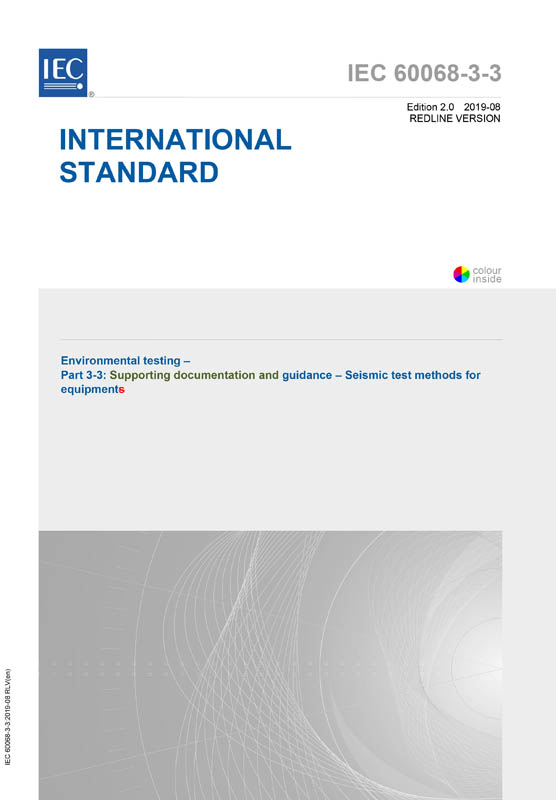IEC 60068-3-3:2019 RLV
Environmental testing - Part 3-3: Supporting documentation and guidance - Seismic test methods for equipment
Ausgabedatum:
2019-08
Edition:
2.0
Sprache: EN - englisch
Seitenzahl: 148 VDE-Artnr.: 247939
IEC 60068-3-3:2019 RLV contains both the official IEC International Standard and its Redline version. The Redline version is available in English only and provides you with a quick and easy way to compare all the changes between the official IEC Standard and its previous edition.
IEC 60068-3-3:2019 applies primarily to electro-technical equipment but its application can be extended to other equipment and to components. In addition, if some type of analysis is always performed when making a seismic qualification, for example for the choice of the representative sample to be tested or for the extension of the seismic qualification from the tested specimen to similar specimens, the verification of the performance of an equipment by analysis or by a combination of testing and analysis can be acceptable but is outside the scope of this document, which is restricted to verification based entirely upon data from dynamic testing. This second edition cancels and replaces the first edition published in 1991. This edition constitutes a technical revision. This edition includes the following significant technical changes with respect to the previous edition:
- the main aim of this revision is to connect the testing level to the seismic activity level of the zone where the equipment could be installed;
- a standard shape for the required response spectrum is also given for the general seismic class for which the seismic environment is either not known or is imprecisely known;
- Clauses 11 to 15 were renumbered and some adjustments were made as their content is very general and the requirements can be applied both to the general seismic class and to the specific seismic class;
- the word “envelope” is replaced with “dominance” and “to envelop” with “to dominate” in order to provide a more precise meaning from a mathematical point of view.
The contents of the corrigendum of September 2021 have been included in this copy.


